Review of the Day: The Fantastic Jungles of Henri Rousseau by Michelle Markel
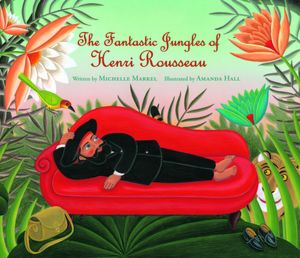 The Fantastic Jungles of Henri Rousseau
The Fantastic Jungles of Henri Rousseau
By Michelle Markel
Illustrated by Amanda Hall
Eerdmans Books for Young Readers
$17.00
ISBN: 978-0-8028-5264-6
Ages 4-8
On shelves now
I’m not ashamed to say it, though perhaps I should be. Still, it’s true. Though I grew up in the middle class with a good education and a stint at a liberal arts college there are huge gaping gaps in my knowledge that have consistently been filled in over the years by children’s books. I know that I am not alone in this. When I worked in NYPL’s Central Children’s Room we had any number of regular adult patrons that would come in seeking children’s books on a variety of different topics so that they could learn about them in a non-threatening fashion. At its best a children’s book takes a complex subject and synthesizes it down to its most essential parts. Simple enough. But if you’re dealing with a picture book biography, it then has to turn a human life in a cohesive (child friendly) story. No mean feat. So when I saw this picture book bio of the artist Henri Rousseau I was immediately arrested by its art. Then I sort of came to realize that when it came to the man himself, I knew nothing. Next to nothing. I may never win a Jeopardy round or a game of Trivial Pursuit but thanks to great books like this one I may someday attain the education of a seven-year-old. There are worse fates in the world. These days, seven-year-olds get all the good stuff.
Your everyday average forty-year-old toll collector doesn’t usually drop everything to become a painter, yet that’s exactly what one did back in the 19th century. His name was Henri Rousseau and though he never took an art course in his life (art lessons aren’t exactly available on a toll collector’s budget) he does his research, looks at art, sits himself down, and begins to paint. He’s incredibly excited after his first big exhibition but his reviews say mostly “mean things” about his art. Still, he clips them, saves them, and continues to paint. Over the years he meets with very little success but is inspired by greenhouses and the lush topiary found inside. He can’t afford to ever see a jungle of his own so he makes them up. Finally, after decades and decades, the new young crop of artists takes note of his work. At last, he is celebrated and appreciated and his naïf style is seen for what it truly is; Simultaneously ahead of its time, and timeless.
ADVERTISEMENT
ADVERTISEMENT
 As far as I can tell the picture book biography can go in a certain number of directions when it comes to its interior art. It can seek to emulate the original artist, mimicking their style with mixed results. Or it can eschew the original artist altogether and only show their paintings as images on walls or in the notes at the book’s end. Artist Amanda Hall takes a slightly different take with her art, inserting Mr. Rousseau into his own works. As she says at the end “Instead of my usual pencil crayon and watercolor technique, I used both watercolor and acrylics for the illustrations, as I wanted to get close to the feel of Rousseau’s own paintings. I decided to break the rules of scale and perspective to reflect his unusual way of seeing the world. For some of the illustrations I drew directly on his actual paintings, altering them playfully to help tell the story.” That right there might be the book’s difference. I think that for many of us, the joy of an Henri Rousseau painting lies not in the composition necessarily (though that is a plus) but the sheer feel of the piece. Rousseau’s jungle scenes do not look or feel like anyone else’s and Hall has done a stellar job capturing, if not the exact feel, then a winning replica of it for kids. The endpapers of this book are particularly telling. Open the cover and there you find all the usual suspects in a Rousseau landscape, each one creeping and peeking out at you from behind the ferns and oversized blossoms.
As far as I can tell the picture book biography can go in a certain number of directions when it comes to its interior art. It can seek to emulate the original artist, mimicking their style with mixed results. Or it can eschew the original artist altogether and only show their paintings as images on walls or in the notes at the book’s end. Artist Amanda Hall takes a slightly different take with her art, inserting Mr. Rousseau into his own works. As she says at the end “Instead of my usual pencil crayon and watercolor technique, I used both watercolor and acrylics for the illustrations, as I wanted to get close to the feel of Rousseau’s own paintings. I decided to break the rules of scale and perspective to reflect his unusual way of seeing the world. For some of the illustrations I drew directly on his actual paintings, altering them playfully to help tell the story.” That right there might be the book’s difference. I think that for many of us, the joy of an Henri Rousseau painting lies not in the composition necessarily (though that is a plus) but the sheer feel of the piece. Rousseau’s jungle scenes do not look or feel like anyone else’s and Hall has done a stellar job capturing, if not the exact feel, then a winning replica of it for kids. The endpapers of this book are particularly telling. Open the cover and there you find all the usual suspects in a Rousseau landscape, each one creeping and peeking out at you from behind the ferns and oversized blossoms.
A poorly made picture book bio will lay out its pictures in a straightforward dull-as-dishwater manner never deviating or even attempting to inject so much as an artistic whim. The interesting thing about Hall’s take on Rousseau is that while, yes, she plays around with scale and perspective willy-nilly, she also injects a fair amount of whimsy. Not just the usual artist-flying-through-the-air-to-represent-his-mental-journey type of stuff either. There is a moment early on when a tiny Rousseau pulling a handcart approaches gargantuan figures that look down upon him with a mixture of pop-eyed surprise and, in some cases, anger. Amongst them, wearing the coat and tails of gentlemen, are two dogs and one gorilla. Later Hall indicates the passing of the years by featuring three portraits of Rousseau, hair growing grey, beard cut down to a jaunty mustache. On the opposite page three critics perch on mountains, smirking behind their hands or just gaping in general. It’s the weirdness that sets this book apart and makes it better than much of its ilk. It’s refreshing to encounter a bio that isn’t afraid to make things odd if it has to. And for some reason that I just can’t define . . . it definitely has to.
 But to get back a bit to the types of bios out there for kids, as I mentioned before Hall inserts Rousseau directly into his own painting when we look at his life. Done poorly this would give the impression that he actually did live in jungles or traipse about with lions, and I’m sure there will be the occasional young reader who will need some clarification on that point. But in terms of teaching the book, Hall has handed teachers a marvelous tool. You could spend quite a lot of time flipping between the paintings here and the ones Rousseau actually created. Kids could spot the differences, the similarities, and get a good sense of how one inspired the other. Near the end of the book Hall also slips in a number of cameos from contemporary artists, and even goes so far as to include a key identifying those individuals on the last few pages. Imagine how rich an artistic unit would be if a teacher were to take that key and pair it with the author bios of THOSE people as well. For Gertrude Stein just pull out Gertrude is Gertrude is Gertrude is Gertrude by Jonah Winter. Pablo Picasso? A quick look at The Boy Who Bit Picasso by Antony Penrose. Lucky kids.
But to get back a bit to the types of bios out there for kids, as I mentioned before Hall inserts Rousseau directly into his own painting when we look at his life. Done poorly this would give the impression that he actually did live in jungles or traipse about with lions, and I’m sure there will be the occasional young reader who will need some clarification on that point. But in terms of teaching the book, Hall has handed teachers a marvelous tool. You could spend quite a lot of time flipping between the paintings here and the ones Rousseau actually created. Kids could spot the differences, the similarities, and get a good sense of how one inspired the other. Near the end of the book Hall also slips in a number of cameos from contemporary artists, and even goes so far as to include a key identifying those individuals on the last few pages. Imagine how rich an artistic unit would be if a teacher were to take that key and pair it with the author bios of THOSE people as well. For Gertrude Stein just pull out Gertrude is Gertrude is Gertrude is Gertrude by Jonah Winter. Pablo Picasso? A quick look at The Boy Who Bit Picasso by Antony Penrose. Lucky kids.
Just as the art of a picture book biography can go any number of directions, the storytelling is in the same boat. You want to tell the life of a man. Fair enough. Do you encompass everything from birth to death, marking dates and important places along the way? Do you synthesize that life down to a single moment and then use your Author’s Note at the end to tell why that person is important at all (many is the Author’s Note forced to do the heavy lifting). Or do you just zero in on what it is that made that person famous in the first place and look at how they struggled with their gift? Author Michelle Markel opts for the latter. A former journalist, Markel first cut her teeth on the author bio with her lovely Dreamer from the Village: The Story of Marc Chagall. Finding that these stories of outsider artists appealed to her, the move to Rousseau was a natural one. One that focuses on the man’s attempts to become an artist in the face of constant, near unending critical distaste. Markel’s gift here is that she is telling the story of someone overcoming the odds (to a certain extent . . . I mean he still died a pauper an all) in the face of folks telling him what he could or couldn’t do. It’s inspirational but on a very gentle scale. You’re not being forced to hear a sermon on the joys of stick-to-itativeness. She lands the ending too, effortlessly transitioning from his first successful debut at an exhibition to how he is remembered today.
I remember having to learn about artists and composers in elementary school and how strange and dull they all seemed. Just a list of dead white men that didn’t have anything to do with my life or me. The best picture book bios seek to correct that old method of teaching. To make their subjects not merely “come alive” as the saying goes but turn into flesh and blood people. You learn best about a person when that person isn’t perfect, has troubles, and yet has some spark, some inescapable something about them that attracts notice. A combination of smart writing and smarter art is ideal, particularly when you’re dealing with picture book biographies. And The Fantastic Jungles of Henri Rousseau is nothing if not smart. It typifies the kind of bios I hope we see more of in the future. And, with any luck, it will help to create the kinds of people I’d like to see more of in the future. People like Henri Rousseau. Whatta fella. Whatta book.
On shelves now.
Source: Final copy sent from publisher for review.
Like This? Then Try:
- I Am Marc Chagall by Bimba Landmann
- A Weekend with Rousseau by Gilles Plazy
- Jean Little Library
- Books Together
- The Nonfiction Detectives
- Shelf-employed
- Waking Brain Cells
- Bookshelf: What We’re Reading
Professional Reviews: Kirkus
Interviews: With Michelle Markel at I.N.K. (Interesting Nonfiction for Kids)
Misc: Read what Ms. Markel has to say about the book herself when she writes the guest post at Cynsations.
Videos:
A nice little book trailer exists as well.
There’s even a director’s cut.
Filed under: Best Books of 2012, Reviews
About Betsy Bird
Betsy Bird is currently the Collection Development Manager of the Evanston Public Library system and a former Materials Specialist for New York Public Library. She has served on Newbery, written for Horn Book, and has done other lovely little things that she'd love to tell you about but that she's sure you'd find more interesting to hear of in person. Her opinions are her own and do not reflect those of EPL, SLJ, or any of the other acronyms you might be able to name. Follow her on Twitter: @fuseeight.
ADVERTISEMENT
ADVERTISEMENT
SLJ Blog Network
One Star Review, Guess Who? (#211)
Kevin McCloskey on ‘Lefty’ | Review and Drawn Response
Notable NON-Newbery Winners: Waiting for Gold?
The Seven Bills That Will Safeguard the Future of School Librarianship
Take Five: Newbery Picks, Part Two
Gayle Forman Visits The Yarn!
ADVERTISEMENT



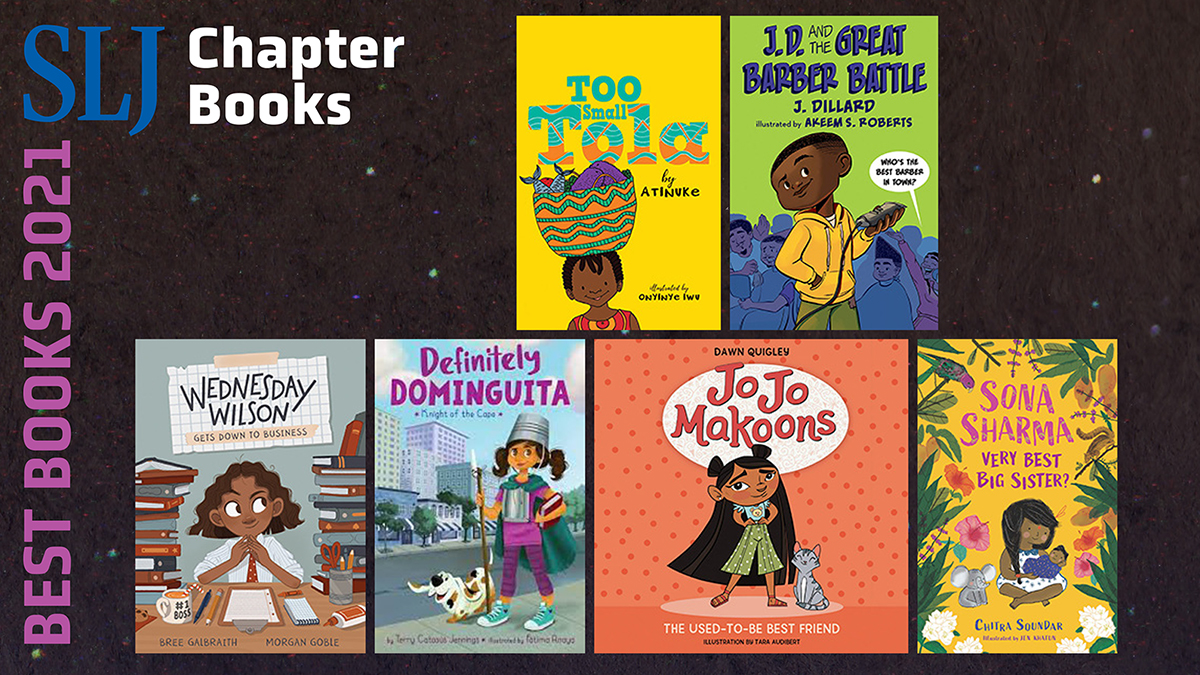
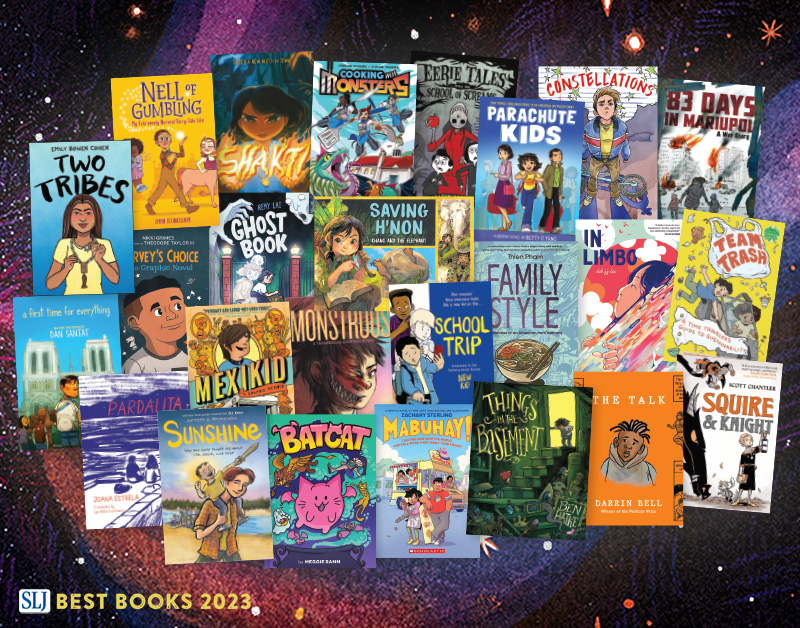
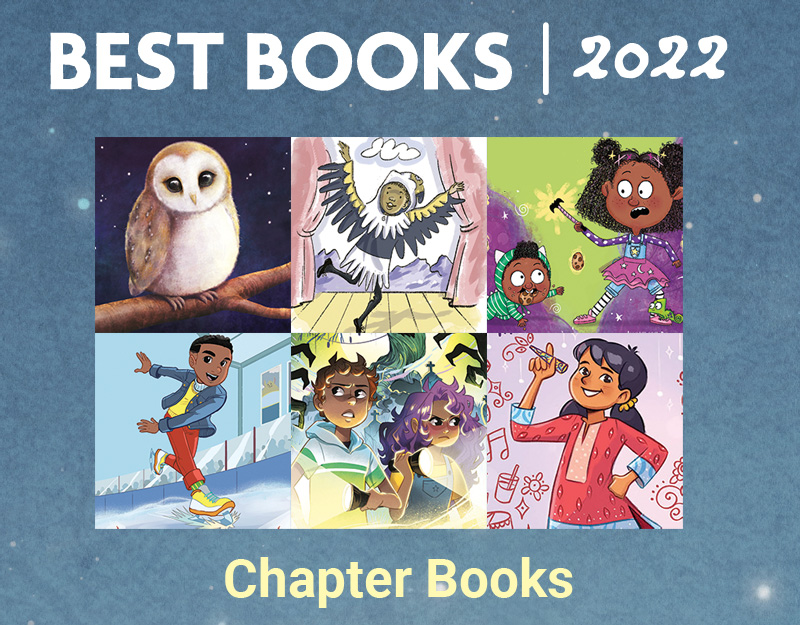
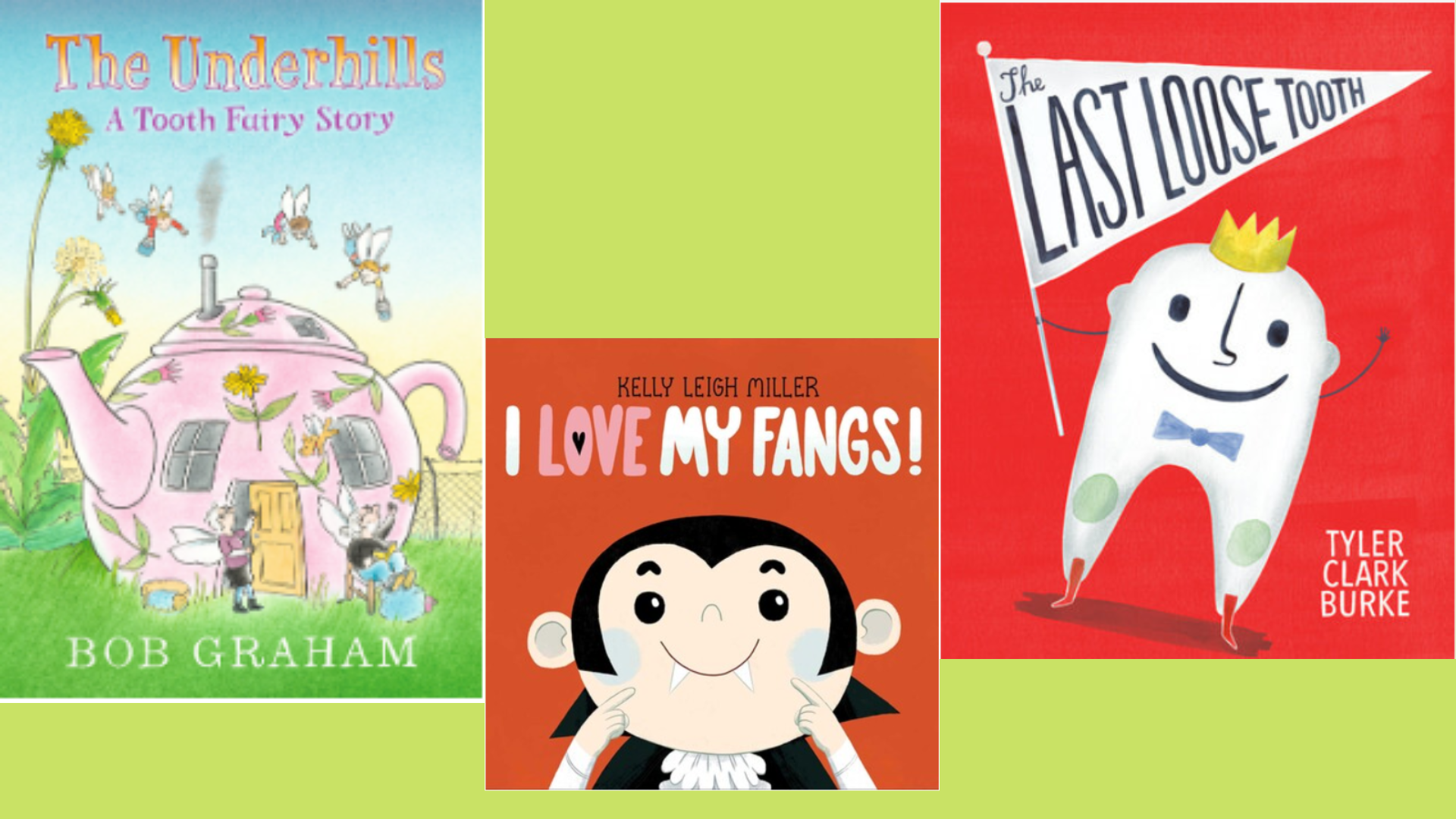
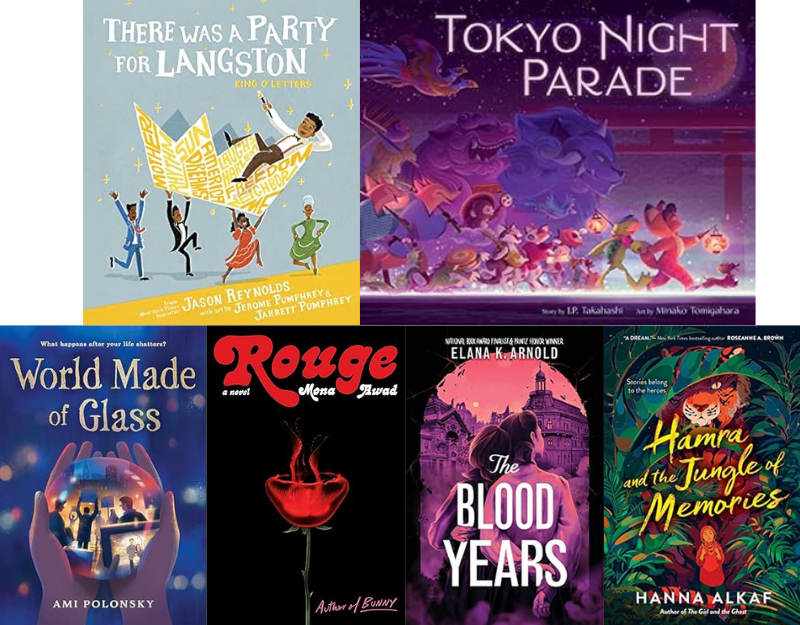
Absolute agreeed!
What a terrific review–and, yes, Michelle Markel’s book about Chagall is fabulous, too!
I agree. It’s a terrific biography, one that will inspire not only art loving kids to follow their dreams. Bravo to Michele Markel and Amanda Hall and to Elizabeth Bird for the thoughtful review.